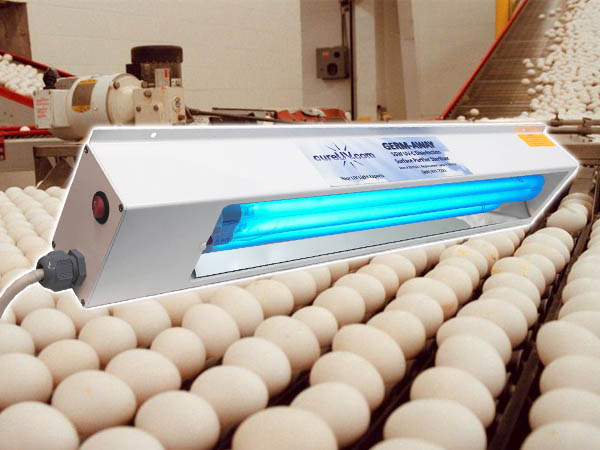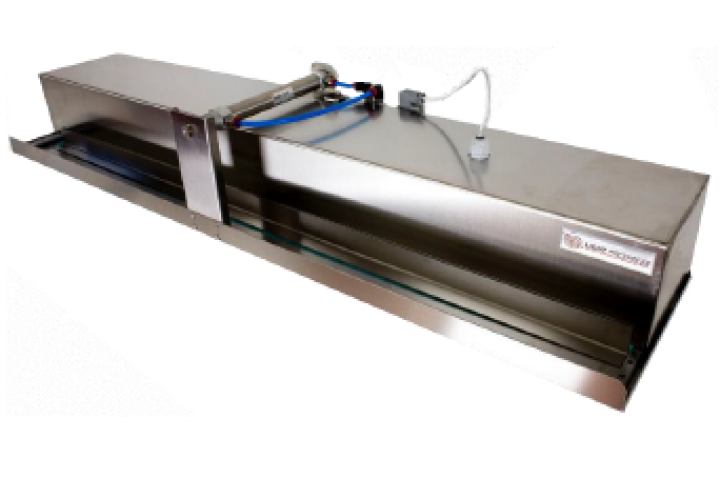UV Surface Disinfection Demystified: Comprehending the Scientific Research Behind the Remedy
Wiki Article
Checking Out UV Sanitation: A Crucial Tool in the Battle Versus Harmful Microorganisms
As the world deals with an ever-increasing hazard from hazardous microorganisms, the search for efficient methods of sanitation has come to be an immediate top priority. While traditional cleaning approaches have actually revealed some success, there is an expanding acknowledgment that we require to discover cutting-edge methods to fight these unnoticeable opponents. One such strategy that has garnered substantial interest is UV disinfection. Taking advantage of the power of ultraviolet light, this technology has demonstrated encouraging cause eliminating a vast array of virus. Exactly how does it function? What are the advantages? And where can it be used? In this discussion, we will explore the world of UV disinfection, revealing its potential as a necessary device in the fight against dangerous pathogens.Exactly How Does UV Disinfection Work?
UV sanitation functions by using ultraviolet (UV) light to eliminate hazardous virus and avoid their spread. This extremely reliable approach involves using UV radiation to interfere with the DNA and RNA of microorganisms, rendering them unable to replicate and triggering their supreme destruction.When UV light is used for sanitation, it is normally emitted from a lamp or light bulb that produces a certain wavelength of UV-C light. uv surface disinfection. This wavelength, ranging from 200 to 280 nanometers, is particularly reliable at passing through the external cell wall of microorganisms, viruses, and other microbes. Once inside the cell, the UV radiation targets and damages the genetic product, preventing the bacterium from creating and recreating infection
UV disinfection systems are made to give off the ideal intensity and duration of UV light to guarantee reliable pathogen elimination. The dosage of UV light needed for sanitation relies on variables such as the kind of microorganism, its resistance to UV radiation, and the certain application. Additionally, the system should be very carefully engineered to ensure correct exposure of the target virus and to stay clear of any kind of possible harm to humans or the setting.
The Benefits of UV Disinfection
UV sanitation uses a plethora of benefits in properly eliminating hazardous virus and reducing the risk of infection. Unlike conventional disinfection techniques that depend on chemicals, UV sanitation uses ultraviolet light to damage the DNA and RNA of microbes, providing them unable to replicate and create infections.Another substantial advantage of UV disinfection is its efficiency in killing a vast array of virus. UV light has actually been confirmed to effectively eliminate germs, infections, fungi, and protozoa, consisting of those that are immune to traditional disinfectants. This broad-spectrum effectiveness makes UV disinfection a functional device in various setups, such as medical care centers, water therapy plants, and food handling sectors.
Along with its effectiveness, UV sanitation additionally supplies rapid disinfection cycles. Unlike various other approaches that need extended contact times or recurring applications, UV disinfection can achieve substantial microorganism reduction in a matter of secs. This fast and efficient process permits improved performance, reduced downtime, and enhanced overall functional performance.
Furthermore, UV disinfection is a non-contact method, which suggests that it does not require straight physical call with the surfaces or items being disinfected. This feature makes it appropriate for usage on fragile equipment and sensitive products that may be harmed or influenced by other sanitation methods.
Applications of UV Sanitation in Health Care

UV sanitation is additionally utilized in the sterilization of medical devices and instruments (uv surface disinfection). The high strength of UV light can efficiently kill microorganisms, viruses, and other microorganisms, making certain that clinical devices are totally free and risk-free from pollutants. Additionally, UV sanitation is used in water therapy systems within medical care facilities. UV light can suspending unsafe germs, infections, and parasites, making the water secure for intake and lowering the threat of waterborne infections.
Furthermore, UV disinfection modern technology is utilized in the sanitation of health care uniforms and personal safety devices (PPE) By utilizing UV light, medical care experts can guarantee that their home attires and PPE are totally free from microorganisms, stopping the transmission of infections in between patients and medical care workers.
UV Sanitation in Public Spaces
Public areas are increasingly executing UV sanitation modern technology as an essential measure to battle the spread of unsafe virus. With the ongoing international pandemic and the constant risk of infectious diseases, the requirement for efficient sanitation techniques in public locations has come to be paramount. UV sanitation supplies a trusted and reliable remedy hereof.
UV disinfection systems use ultraviolet light to shut off the DNA and RNA of bacteria, viruses, and various other virus. This procedure interrupts their capability to duplicate and make them harmless. These systems can be set up in numerous public areas, including heating and cooling systems, escalators, lifts, and surface sanitation robots. Using UV sanitation innovation in public areas not only helps in lowering the danger of infection however likewise instills confidence among the general public concerning their security.
As public rooms continue to adapt to the obstacles positioned by transmittable illness, UV sanitation technology plays a vital function in making certain a tidy and risk-free setting. By carrying out such procedures, public rooms can successfully minimize the spread of dangerous virus and add to the overall well-being of the community.
The Future of UV Disinfection Technology
As the need for boosted disinfection approaches remains to expand in action to the continuous global pandemic and the consistent hazard of transmittable diseases, the future of UV disinfection technology holds appealing innovations in making certain much more reliable and effective virus obliteration in different settings.
One area of advancement is the development of even more portable and portable UV sanitation tools. These devices would permit less complicated and a lot more adaptable implementation in a range of settings, such as workplaces, schools, and transportation systems. Furthermore, improvements in automation and robotics are being explored to improve the performance and efficiency of UV sanitation procedures. This includes making use of independent robotics outfitted with UV-C lights to browse and sanitize huge areas rapidly and properly.
Another location of exploration is making use of UV disinfection in air filtration systems. By integrating UV-C lights into cooling and heating systems, airborne pathogens can be effectively neutralized, reducing the risk of transmission in indoor atmospheres.
Furthermore, researchers are investigating using UV sanitation in food handling facilities to make certain the safety Discover More Here and quality of food. UV-C light has actually been found to be efficient in eliminating foodborne microorganisms, supplying a chemical-free option to standard sanitation methods.
Conclusion
In conclusion, UV sanitation is a vital device in the fight versus hazardous pathogens. Its efficiency in killing bacteria, infections, and other bacteria makes it a beneficial technology in medical care setups and public areas. With its capacity to give a chemical-free and environmentally pleasant technique of disinfection, UV innovation holds wonderful possible for the future. Its widespread implementation can add to the prevention of infections and the improvement of public health.UV disinfection systems are designed to release the proper intensity and duration of UV light to ensure reliable microorganism elimination. The dosage of UV light needed for sanitation depends on factors such as the kind of microbe, its resistance to UV radiation, and the certain application. Unlike conventional disinfection approaches that count on chemicals, UV sanitation uses ultraviolet light to ruin the DNA and RNA of microorganisms, providing them not able to replicate and create infections.In addition to its efficacy, UV sanitation likewise offers quick sanitation cycles. One of the major applications of UV disinfection in medical care is in the sanitation of patient areas and operating cinemas.
Report this wiki page